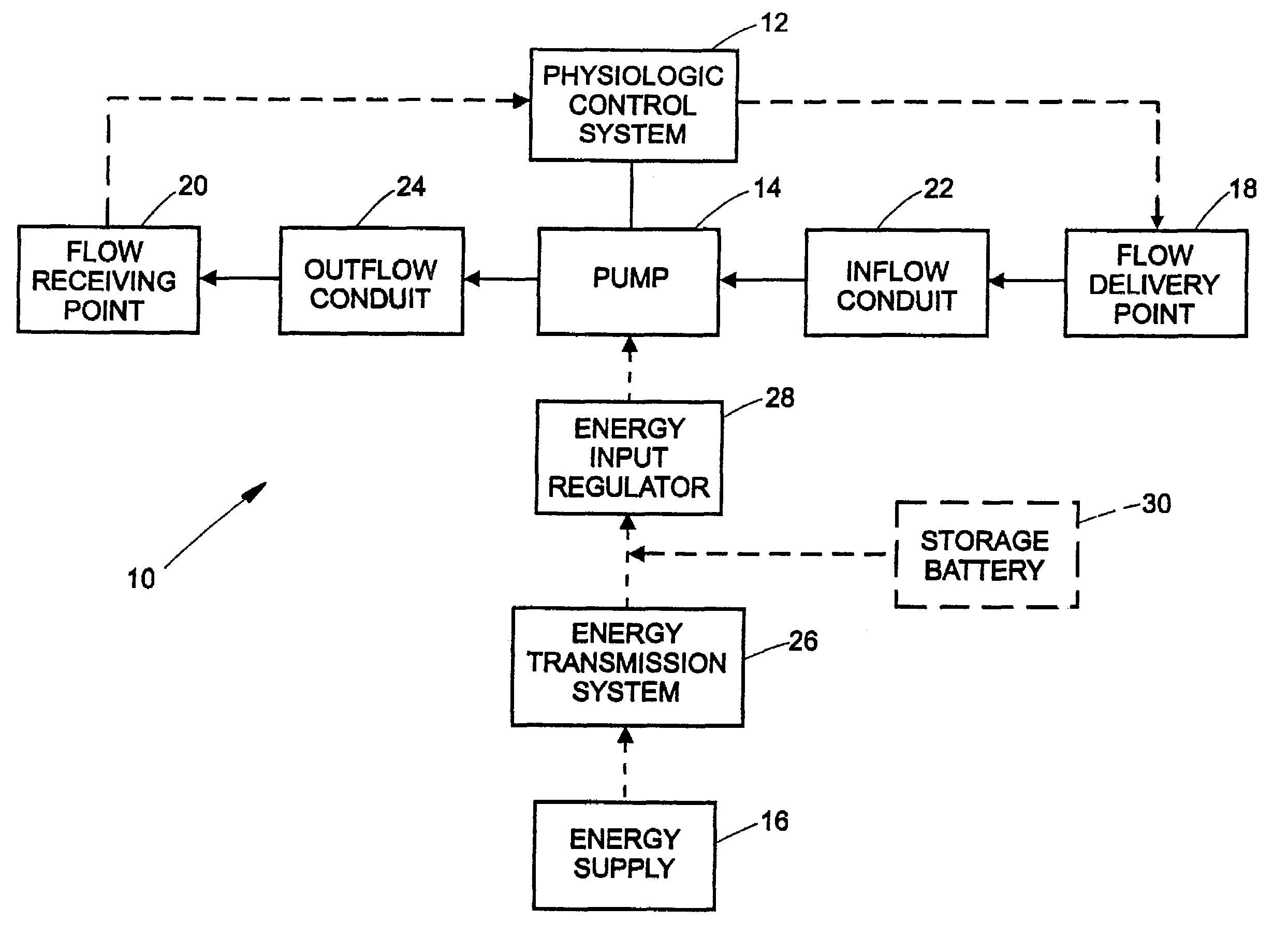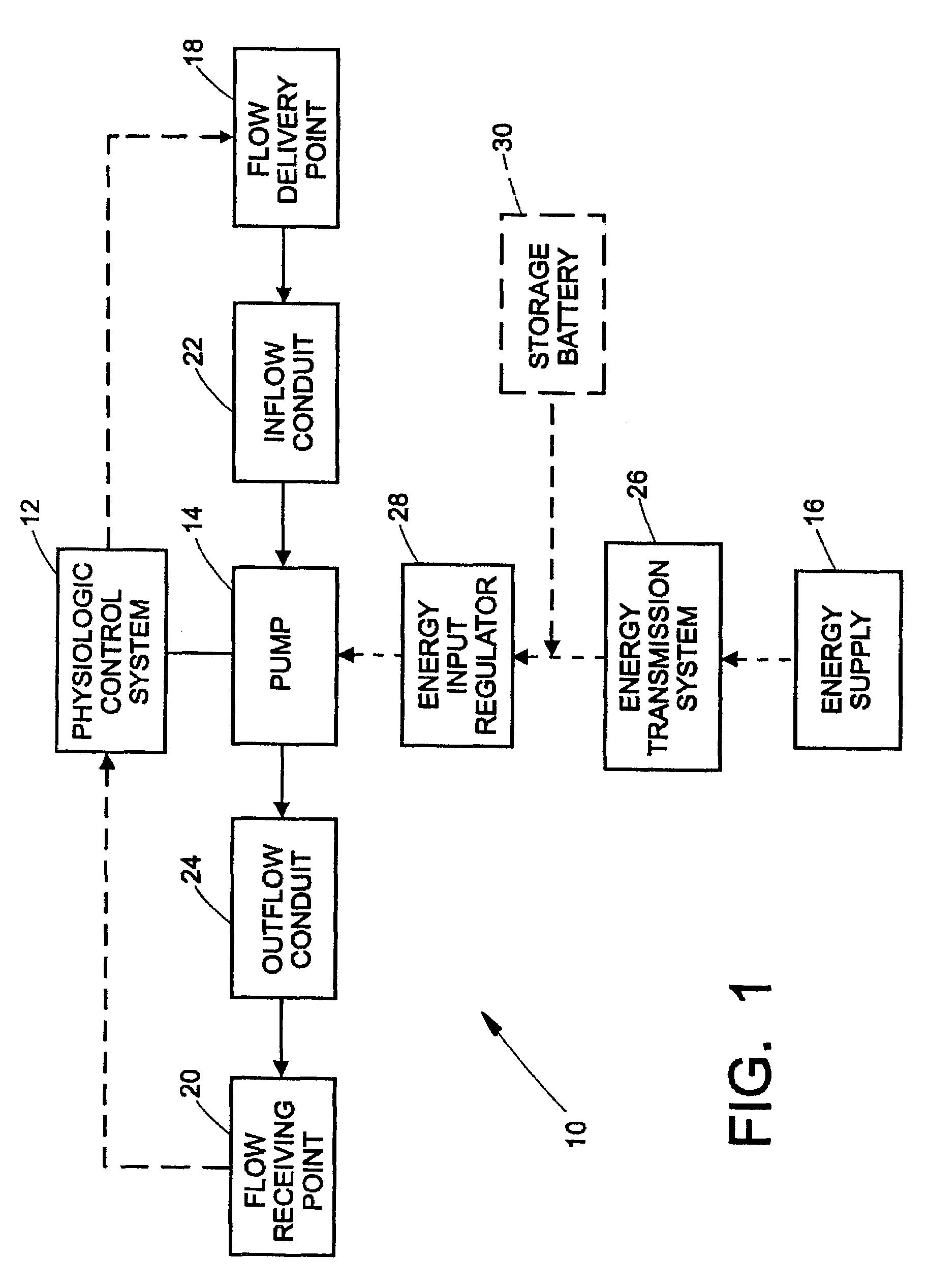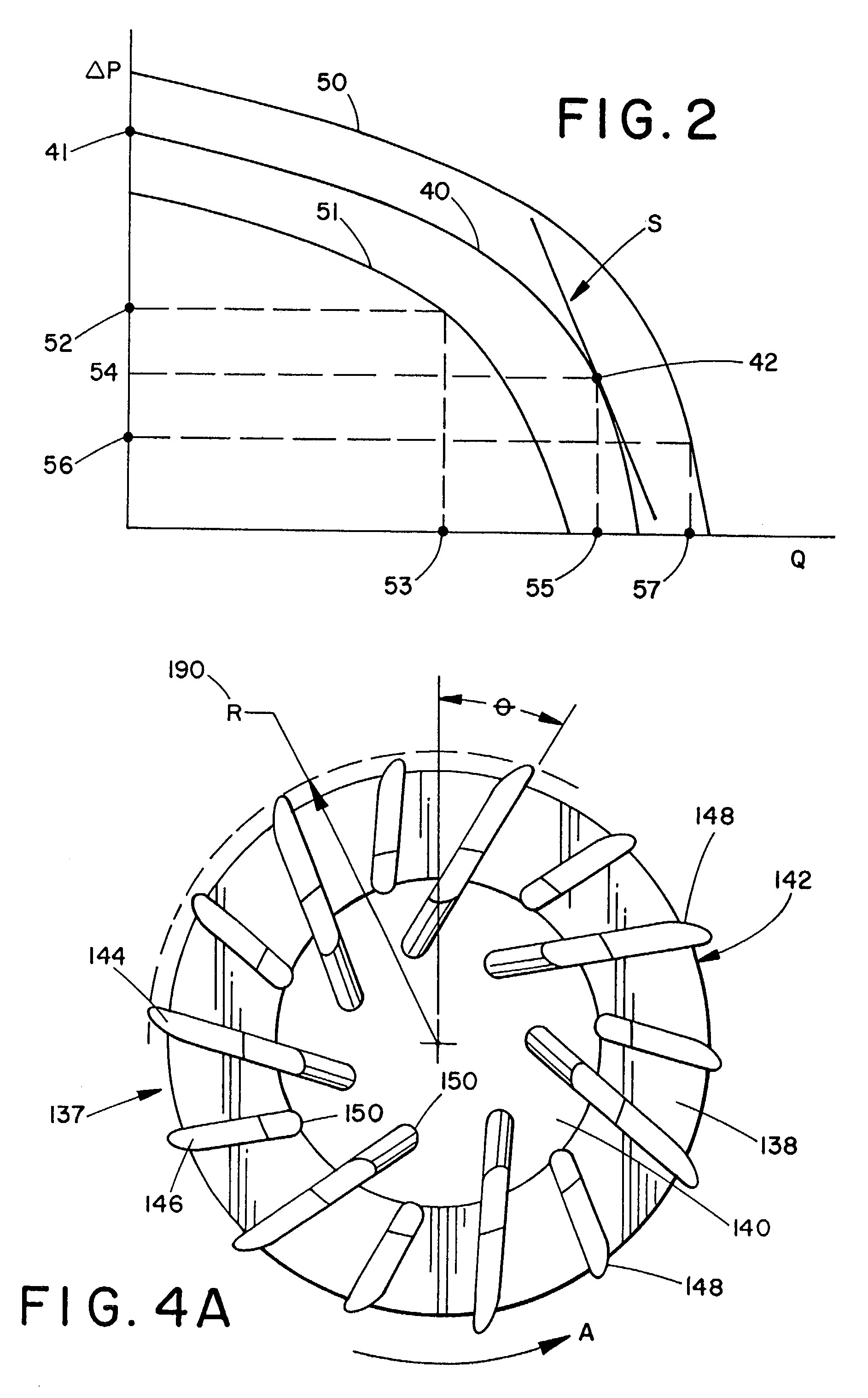Flow controlled blood pump system
a rotodynamic pump and flow control technology, applied in the direction of positive displacement liquid engines, machines/engines, therapy, etc., can solve the problems of unique interaction between the pump and the human circulatory system, the use of rotodynamic blood pumps as cardiac prostheses, and the variation of pressure and flow within the circulatory system, so as to improve the ability to deliver and control flow, increase the rotational speed of the impeller, and increase the pressure capacity of the pump
- Summary
- Abstract
- Description
- Claims
- Application Information
AI Technical Summary
Benefits of technology
Problems solved by technology
Method used
Image
Examples
Embodiment Construction
[0027]Referring now to the drawings wherein the showings are for purposes of illustrating the preferred embodiments of the invention only and not for purposes of limiting same, FIG. 1 shows block diagram of a blood pumping system according to the present invention. The human physiologic system is represented by block 12 and interfaces with pump 14 via flow receiving point 20 and flow delivery point 18. Typically, in a blood pump application, flow delivery point 18 may be a cannulation of the atrium or ventricle of the natural heart. Inflow conduit 22 may be a fluid carrying duct connecting the cannulation point to the inlet port of the pump. Outflow conduit 24 is another fluid carrying duct that connects pump outlet port to the flow receiving point 20. With a blood pump system, this point would usually be an anastomosis to a major artery.
[0028]The function of the biological control system 12 is well-known and a detailed discussion thereof is not necessary for an understanding of the...
PUM
 Login to View More
Login to View More Abstract
Description
Claims
Application Information
 Login to View More
Login to View More - R&D
- Intellectual Property
- Life Sciences
- Materials
- Tech Scout
- Unparalleled Data Quality
- Higher Quality Content
- 60% Fewer Hallucinations
Browse by: Latest US Patents, China's latest patents, Technical Efficacy Thesaurus, Application Domain, Technology Topic, Popular Technical Reports.
© 2025 PatSnap. All rights reserved.Legal|Privacy policy|Modern Slavery Act Transparency Statement|Sitemap|About US| Contact US: help@patsnap.com



